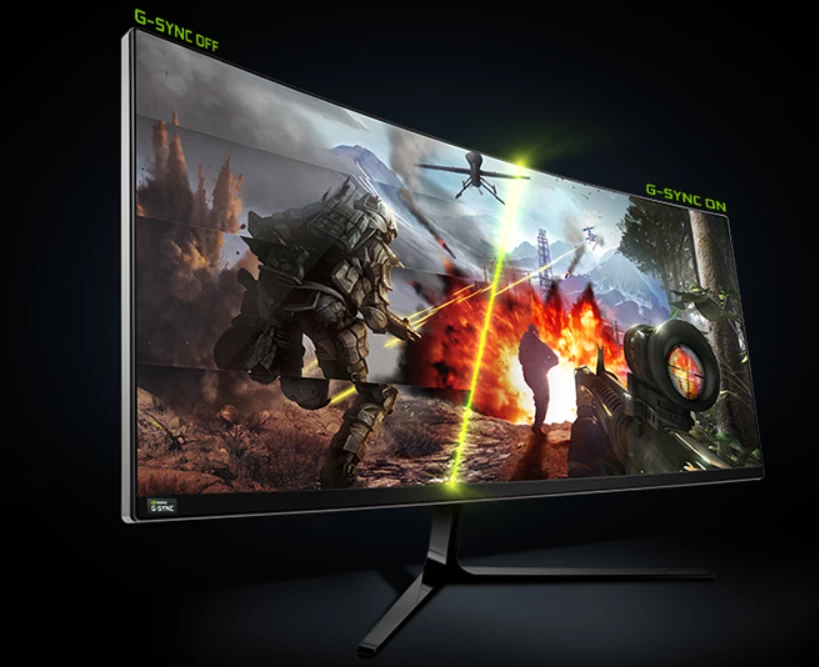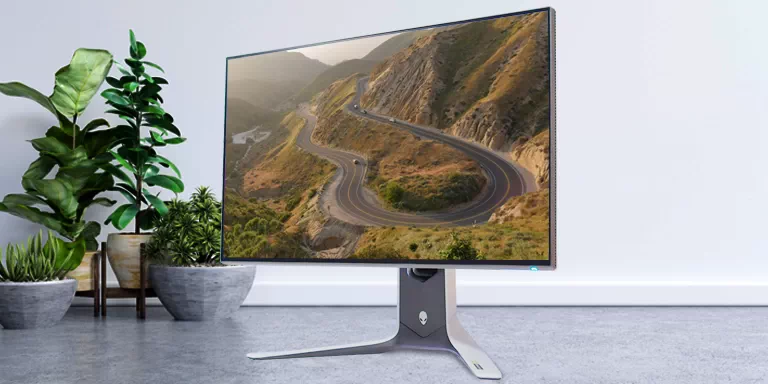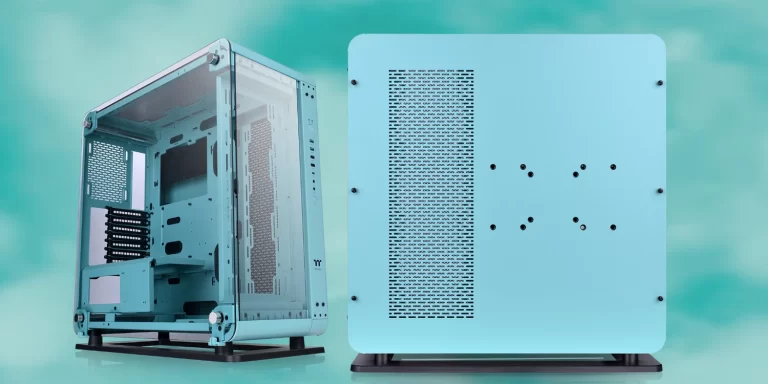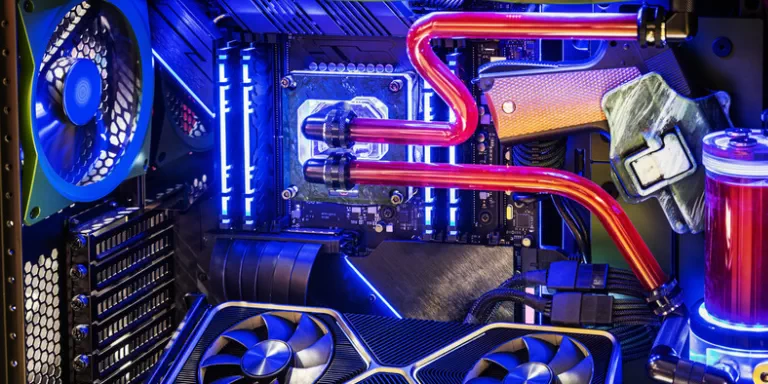
As we gear towards the digital age, more and more people rely on computer screens for work and leisure. This makes it important to understand the factors that dictate the quality of the viewing experience. Two of the significant aspects that come to mind are the monitor response time and refresh rate. In the world of productivity-oriented work, we want a high-performing display that won’t let us down.
If you want to improve your gaming experience, you may need to compare the response time vs refresh rate. Monitor response time refers to the speed at which a screen reacts to an input. That means the time it takes for each pixel to change from one color to another. The faster the response time, the smoother the image.
On the other hand, the refresh rate defines how often the screen updates the displayed content. Measured in hertz (Hz), it determines how many times per second an image will refresh on the screen. The higher the refresh rate, the smoother the image, especially for fast-moving objects.
A high-performance monitor can reduce eye strain and prevent lag. A higher refresh rate can also help our brains keep up with the information on the screen more effectively. Therefore, it is crucial to consider both response time and refresh rate as critical factors in improving productivity. In this read, we will be diving deeper into the differences between these two factors and why they are essential in a productive workspace.
Table of Contents
RELATED: Best White Gaming Monitors
Understanding Response Time
The response time of a monitor refers to the time it takes for a pixel to change from one color to another. Understanding this parameter is crucial for ensuring seamless performance and reducing eye strain, making it an important aspect to consider when choosing a monitor.
What is the monitor response time?
A monitor’s response time is critical, and it refers to how long it takes for the display to change from one color to another. This is typically measured in milliseconds (ms). A lower response time ensures that the images on the screen are displayed quickly and fluidly, allowing for a smoother gaming experience with less motion blur or ghosting.
The average monitor response time is around 5ms, but high-end gaming monitors can have a response time as low as 1ms. It’s important to note that a lower response time doesn’t always mean a better display, as it can come at the cost of other features, such as color accuracy or brightness. Therefore, it’s about finding a balance that works for your needs.
If you’re a serious gamer or someone who works with high-velocity visuals, you should definitely pay attention to the gaming monitor response time when purchasing a display. It can make a big difference in how fast and accurately you can see the on-screen action, leading to a more immersive and enjoyable experience overall.
How response time affects the user experience?
Response time is one of the most significant factors that determine the success of a user interface. Studies have shown that even a delay of milliseconds can significantly impact the user experience. Slow response times can lead to frustrated users, resulting in lower engagement and higher abandonment rates.
On the other hand, fast response time can create a seamless and more satisfactory user experience, enhancing engagement and increasing success rates. In today’s fast-paced world, users expect a quick and effortless experience from their digital interactions. Hence, it’s crucial for developers and designers to focus on delivering fast response times to meet user expectations.
In gaming, a delay of even a few milliseconds can mean the difference between winning and losing. Similarly, in programming, a slow response time can quickly become frustrating and even hinder the development process. As such, minimizing response time is crucial for achieving optimal performance in these tasks. This can be achieved through the use of high-performance hardware and optimized software, among other strategies. Ultimately, prioritizing response time can greatly enhance the efficiency and productivity of these activities.
Understanding Refresh Rate
Refresh rate defines how many times per second the monitor updates the image on the display. A higher refresh rate ensures smoother and more seamless visuals, reducing eye strain and providing a better gaming experience. Let’s dive into the intricacies of monitoring refresh rates and why they matter.
What is the monitor refresh rate?
The monitor refresh rate is the frequency at which a display refreshes the image on the screen. The most commonly used refresh rate by modern screens is 60 Hz or 75 Hz, meaning the screen updates the image 60 times per second. However, some high-performance monitors can display 144 Hz to 240 Hz or more.
RELATED: 144Hz Laptop
The refresh rate is an important factor to consider for gamers and professionals who require a smooth and uninterrupted display of fast-moving images. Gamers especially benefit from higher refresh rates as it enhances the experience of fast-paced games. It’s important to note that a higher refresh rate alone won’t make your screen look better; it needs to be paired with a compatible graphics card and a monitor that has low input lag.
A higher refresh rate enhances the smoothness and clarity of images, while lower refresh rates can result in screen tearing or lag. There is a visible difference in the visual experience between the two ranges, and it’s essential to choose a display that suits your use case, whether it’s gaming or general use.
V-Sync, G-Sync, FreeSync and their impact on monitor refresh rates
V-Sync (Vertical Sync) is a display technology that synchronizes the frame rate of a game or application with the refresh rate of the monitor. This technology eliminates screen-tearing and stuttering, resulting in a smoother and more visually immersive gaming experience.
V-Sync helps to prevent screen tearing, a visual artifact that occurs when the graphics card produces more frames than the monitor can display.
When V-Sync is enabled, the graphics card waits for the monitor to finish displaying one frame before rendering the next, ensuring that the monitor always displays complete and synced frames. However, it can also cause input lag and decrease overall performance, depending on the hardware and settings. Therefore, V-Sync is often a matter of personal preference and should be tested on a case-by-case basis.
G-Sync and FreeSync are adaptive sync technologies, which dynamically adjust the monitor refresh rate to match the graphics card output, resulting in butter smooth performance, no lag, and eliminating stuttering and tearing. G-Sync is made by Nvidia and only works with Nvidia graphics cards, while FreeSync is an open standard and works with AMD and Nvidia graphics cards. These technologies can be a game-changer for gamers, as they provide an overall better gaming experience by providing smoother gameplay, with no screen tearing or input lag.

Understanding how monitor refresh rate relates to V-Sync, G-Sync, and FreeSync can help enhance the visual display during gaming or designing for a smoother and better experience. It is crucial to select a monitor that supports one of these technologies depending on the user’s needs, graphics card, and budget.
Response time vs refresh rate: which is more important
When purchasing a new monitor, one of the most frequently debated topics is the importance of response time vs refresh rate. Each of these factors plays a crucial role in determining the overall performance of the display, but it’s important to understand the differences between the two before making a purchase decision.
The most common monitor refresh rates today are 60Hz, 75Hz, and 144Hz, with higher numbers providing smoother, more fluid on-screen motion. Gamers, in particular, tend to prefer higher refresh rates, as they provide a more immersive experience that’s better suited to fast-paced action games.
On the other hand, response time refers to the time it takes for a pixel to transition from one color to another. A lower response time means pixels change colors more quickly, resulting in sharper, more detailed images. The best response times on the market today are generally around 1ms, but most monitors fall within the 1-5ms range.
So, which is more important: response time or refresh rate? The answer is that it largely depends on what you plan to use the monitor for. If you’re a gamer or other professional who needs a high level of responsiveness, then refresh rate is likely your top priority. However, if you’re a creative professional who needs the most accurate color representation possible, then response time should be your main concern.
Keep in mind that response time and refresh rate are not independent factors, and many of the top monitors available provide a combination of both. Ultimately, the best way to choose a monitor is to look at reviews and try to get hands-on experience with different models to see which factors matter most to you.
Conclusion
In conclusion, both response time and refresh rate are crucial for enhancing productivity and user experience. Response time affects the speed of pixels changing color, leading to reduced motion blur and ghosting, while refresh rate determines how many times your screen is updated per second.
High response times and low refresh rates can lead to eye strain, headaches, and reduced productivity. To optimize your display settings for maximum productivity, aim for a response time of less than 5ms and a refresh rate of at least 75Hz. Additionally, consider reducing screen glare and adjusting the brightness and contrast to minimize eye strain. Proper display settings can dramatically boost productivity and enhance your overall work experience.










